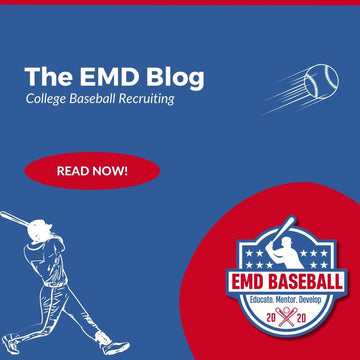Developing a Target List for Aspiring College Baseball Players
by Andy Kiriakedes on Jan 29, 2025
Developing a Target List for Aspiring College Baseball Players
Key Factors to Consider for a Successful College Baseball Career
The journey from high school baseball to college baseball is an exciting and challenging path. For players with aspirations of playing at the collegiate level, creating a well-thought-out target list of potential schools is a crucial step. This list should be tailored to the individual player's talents, academic achievements, and personal preferences. Here are the key factors to consider when developing a useful target list:
1. Level of Play Commensurate with the Player's Talent Level
Understanding your current skill level and potential for growth is essential when targeting colleges. College baseball programs vary greatly in the level of competition, from Division I powerhouse schools to smaller Division III programs. It's important to be realistic about where your skills fit within this spectrum. Seek feedback from coaches, attend showcases, and compare yourself to current college players to gauge where you might excel. Targeting schools where you can be a strong contributor will increase your chances of not only making the team but also getting significant playing time.
2. Academic Standing that Matches the Player's Academic Achievements
Colleges and universities have different academic standards, and aligning your academic achievements with the institutions on your target list is crucial. Maintaining a strong GPA and SAT/ACT scores can open doors to more academically rigorous schools. Research the academic requirements of each institution and ensure you meet or exceed them. Additionally, consider the academic support services available to student-athletes, as balancing academics and athletics can be demanding.
3. Geographic Location
The geographic location of a college can significantly impact your overall college experience. Consider factors such as climate, distance from home, and regional culture. Some players may thrive in warmer climates where they can play baseball year-round, while others might prefer the experience of a traditional four-season environment. Being close to home can provide a support system, but venturing further away can offer new opportunities for personal growth. Determine what location best suits your preferences and comfort level.
4. Campus Setting
The setting of a college campus can greatly influence your daily life as a student-athlete. Large urban campuses offer diverse cultural experiences and networking opportunities, while smaller rural campuses can provide a tight-knit community and focused learning environment. Consider the size of the campus, available facilities, and the overall atmosphere. Visiting campuses and speaking with current students can provide valuable insights into what daily life might be like.
5. Finances
Financial considerations are often a major factor in the college selection process. Understanding the cost of attendance, available scholarships, and financial aid options is essential. While athletic scholarships can significantly reduce the cost, they are often limited and competitive. Investigate academic and need-based scholarships, as well as work-study programs, to help offset expenses. Be sure to have a clear understanding of the financial investment required and plan accordingly.
Conclusion
Developing a target list for aspiring college baseball players requires careful consideration of multiple factors. By aligning your athletic abilities, academic achievements, and personal preferences, you can create a strategic list that maximizes your chances of finding the right fit. Remember to seek advice from coaches, mentors, and family members throughout the process, and be open to exploring a variety of options. With thorough research and thoughtful planning, you can embark on a successful college baseball career that aligns with your goals and aspirations.




